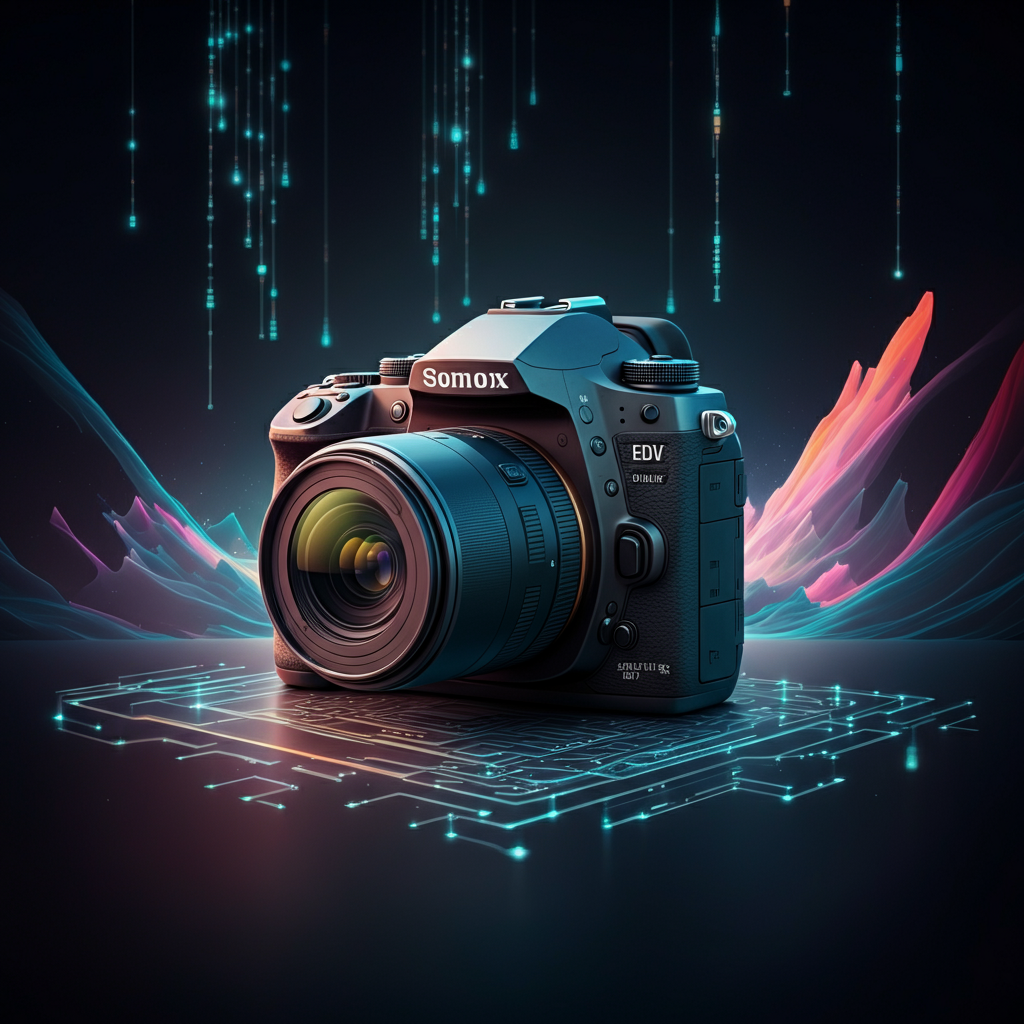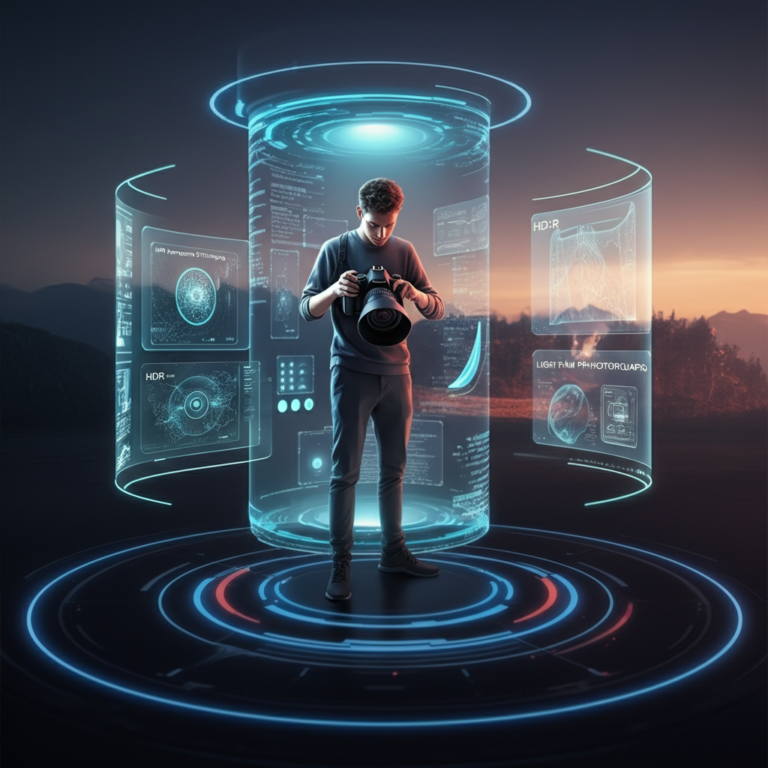Computational Photography Methods: Over the past century, photography has developed from basic mechanical cameras to sophisticated digital systems capable of generating shockingly accurate and detailed images. But the next phase of photography transcends technology; it’s a mix of art and science motivated by creative algorithms—that is, computational photography.
Unlike traditional photography, which primarily depends on the camera and optics, computational photography combines modern technology with imagination to improve how we collect, process, and view photos. This blog emphasizes how computer photography changes the field and investigates its development, methods, uses, and future.
Computational photography’s beginnings and development
With the advent of smartphones, computational photography became a major field of development. Usually featuring smaller sensors and lenses, cell phones naturally restrict image quality compared to DSLRs. Early programmers looked to software to close this difference. The intention was to improve pictures with algorithms instead of depending on the camera’s physical power.
With developments in camera software on its Pixel line, for instance, Google helped to inspire the movement by adding Night Sight for unmatched low-light photography. Not far followed came Apple, including Smart HDR into iPhones to guarantee improved contrast and detail. From cell phones to high-end cameras, this development helped to open the path for computational photography to become ubiquitous in modern imaging devices.
Essential Strategies Driving Computational Photography
The broad phrase “computed photography” refers to numerous creative approaches to improve and control visual outputs. Here are some quite notable examples of computational photography methods:
1. High-Dynamic Range (HDR) photography
HDR imaging guarantees a balanced distribution of light and dark tones in tricky lighting, producing natural-looking images. It is one of the best computational photography methods. It aggregates several pictures taken at different exposure levels into one shot that keeps details throughout bright and dark areas.
HDR is particularly helpful for photographing sunsets when the brightness of the sky and the shade of the foreground create opposing exposures. Computational photography allows the seamless and automated mixing of these exposures.
2. Stitching in Panorama
Recall those broad panoramic views that seem hard to capture in one frame. Panoramic stitching solves this problem by using algorithms to combine numerous individual frames into one large, continuous image.
This method considers overlapping details, automatically aligns images, and fixes inconsistent exposure and focus. Because of applications like Photoshop and built-in smartphone features, both amateur and professional photographers now find this procedure simpler.
3. Photo Field Lighting
Along with the light striking a sensor, light field photography records the angle and direction of that light. After the picture has been taken, users can refocus photographs or change viewpoints thanks to this extra data, providing exceptional post-processing versatility.
Consumer devices like the Lytro light field camera temporarily inspired interest in this technology; while the hardware faded, the light field idea still shapes computational photography research and applications.
4. portrait Mode with Bokeh Effects
Traditionally, achieving a professional bokeh effect required pricey cameras with wide-aperture lenses to produce shallow depth-of-field views. With computational photography, however, this classic effect became widely available via cell phones.
Devices can separate a subject from its surroundings using depth sensors or dual-camera configurations, producing lovely blur effects—often employed in “portrait mode.”. Apple’s iPhone, Google Pixel, and others have polished this approach to compete with DSLR-quality video. These are effective computational photography methods.
5. Super-resolution picture imaging
Super-resolution photography is one of the computational photography methods. It can increase image resolution and detail using algorithms. It analyzes an image, detects trends, and upscales it without adding appreciable noise or blurriness using machine learning.
This method is almost a lifesaver for photographers shooting in low light or catching far-off details with zoom, as it allows them to produce results beyond the range of vision.

Uses for Modern Photography
The ramifications of computational photography go beyond the simple aesthetic enhancement of selfies. This is how modern photography is being shaped in different use contexts:
Smartphone pictures:
Computational photography has changed the rules for smartphone cameras. Every day, people find smartphone cameras more enticing because they can record low-light photographs, create realistic HDR images, achieve zoom without degradation, or replicate cumbersome DSLR capabilities.
Professional Photography:
Real-time focus tracking and background erasing for studio-quality images are starting to appear in professional-grade tools. This is quite helpful in disciplines like portrait and event photography. This is also one of the important computational photography methods.
Medical Imaging:
Digital pathology or microscopy, where improving clarity and depth can result in improved diagnostic accuracy, uses computational photography ideas also in medical imaging.
Augmented Reality and Virtual Reality (AR/VR):
Further proving the variety of its uses, augmented reality and virtual reality (AR/VR) experiences depend increasingly on computational photography for 3D mapping, background separation, and object tracking.
The Prospect of Computational Photographs
With developments already on the horizon to challenge limits further, computational photography seems to have bright future prospects. These trends are helping to shape its potential:
AI and Machine Learning:
Artificial intelligence and machine learning will soon enable computational photography driven by AI to predict user preferences, surpassing mere photo improvement. Imagine a camera that, without any input, instantly changes settings depending on what you are filming. It will be included in computational photography methods.
Real-Time Enhancements:
Real-time computational editing will let photographers evaluate modifications, including lighting tweaks, bokeh effects, or HDR setups, even before the picture is taken.
Multi-Sensor Systems:
Multiple sensors in tiny devices could create accurate depth maps and dynamic image reconstruction.
Advanced Light Field Sensors:
Improved light field technology could allow more complex post-processing capabilities, so serving sectors including astrophotography and cinematography.
Enhanced Resources for Creative Editing:
Tools meant for handling computational images more uncomplicatedly could enable even amateurs to produce outputs usually reserved for post-production pros.
Why Computational Photography Matters to You
Computational photography is important because it allows everyone—from casual users to expert photographers—to access high-quality images. Learning and using these technologies guarantees that you’re not only taking pictures but also producing art, whether your goal is to record events on your smartphone or create outstanding work with sophisticated tools.
If you enjoy taking pictures or working in technology, now’s the time to thoroughly investigate computational photography. Apply the above-described methods to improve your work or create original products in a visually driven market.
Conclusion
Computational photography methods have fundamentally changed the art of image capture by deftly combining technology with imagination to produce amazing effects. This creative discipline has transformed what is feasible with both professional cameras and ordinary smartphone photography by using cutting-edge algorithms and machine intelligence.
Features like HDR imaging, portrait mode, and AI-driven upgrades let photographers, even in demanding lighting circumstances, record photographs with unmatched clarity, depth, and precision. These computational photography methods are creative extensions rather than only tools that enable users to challenge conventional photography limits.
Once reserved for professionals with specialized tools, anyone with a modern gadget may now access the art form, therefore democratizing it and encouraging more creativity all around all ability levels. From improving landscapes to transforming casual images into gallery-worthy works of art, computational photography is clearly influencing the direction of visual storytelling and guaranteeing that this development inspires the following generation of artists and viewers.




